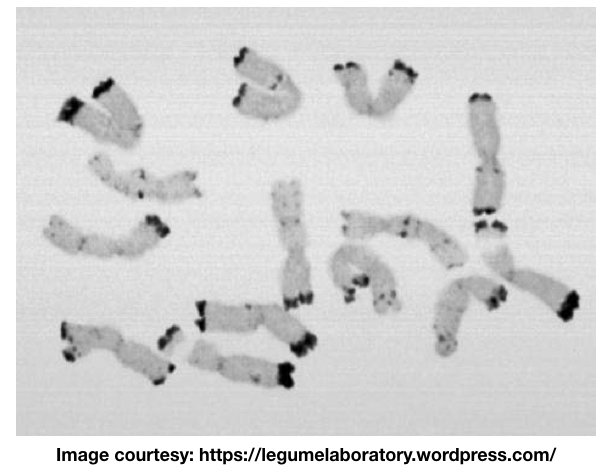“The t banding or t bands is a technique utilized in karyotyping which stains especially the telomeric region, stronger than other regions.”
- Karyotyping is a technique employed to study chromosomes include steps such as sample collection, cell culture, cell harvesting, microscopy and results analysis.
- Diploid human cells have 23 pairs of chromosomes, revealed through karyotyping.
- The technique is used to study various chromosomal defects.
- A secondary technique known as chromosome banding or bands used to study chromosomes that are G-bands, Q, bands, R-bands, T-bands and NOR bands.
To understand the banding technique, we need to know a bit regarding the structure of chromosomes.
Arms, telomere and centromeres are three parts of a chromosome. Arms are the gene-rich regions on which protein-coding genes are located while the telomeres and centromere are non-coding DNA regions.
The telomeres are the ends of chromosomes that protect the arms viz the gene-rich region of chromosomes. They are made up of repetitive DNA regions. It is believed that the length of the telomeric sequence has a definite role in aging.
Banding and stinging are subsidiary karyotyping technique is used to investigate chromosomes. T bands or T banding technique designed specifically to stain or study the telomeric regions.
The present article focus on the overview, process, technique, applications and limitations of the T banding technique.
Related article: What is Karyotyping?- Definition, Steps, Process, and Advantages.
What is T banding?
Requirements for T banding:
Microscope, coverslip and slides, PBS solution, Giemsa stain, Hoechst 33258, UV lamp and acridine orange dye.
Protocol:
- Prepare slides from a good harvested cell suspension and age it for a week.
- Air-dry it and place slides in PBS solution (pH 5.0) for 20 to 60 minutes at 87C temperature.
- Wash slides in PBS.
- Stain slides in 3% Giemsa solution or acridine orange dye for 5 to 20 minutes.
- Stain slides in Hoechst 33258 for few minutes (preparation of working Hoechst solution is given in our ebook).
- Air dry to slides and observe under the microscope.

Process of T bands:
The T banding process initiates by preparing slides with a good harvesting suspension. The cell suspension is dropped from 2 to 3 feet on the slide and air dry.
Age slides for a week or 7 to 8 days.
Soon after the slides are placed in the phosphate buffer saline solution prepared at pH5.0 for an hour for 87°C.
After that slides are placed at room temperature to air-dry, do not heat it.
As we said, place slides in the 3% Giemsa solution for few minutes to stain telomeric regions.
After that slides are dipped into the Hoechst solution and washed using the PBS solution. Observe slides under the microscopes.
Drops of stained regions are observed at the ends of every chromosome- telomeric regions.
These regions are rich in CG sequences comprises 15% of total genomic portions.
Heat process denatures DNA present on chromosomes.
Applications:
- To study the telomeric region of chromosomes.
- Stains only the end of chromosomes.
- Helps preliminarily the end replication process.
- Helps in studying other abnormalities associated with telomeres.
Read more: What are the common Errors in Karyotyping Results?
Other information:
- T bands are smaller than the R bands
- It is observed only at the telomeric regions.
- Bandings aren’t observed on arms or centromeres.
Conclusion:
To investigate various parameters scientists using various banding techniques. If you want various ready to use, standardized and working banding protocols you can purchase our book, when available.
Source:
Human chromosomes: Principle and Techniques (Second Edition) by Ram S. Verma and Arvind Babu.


